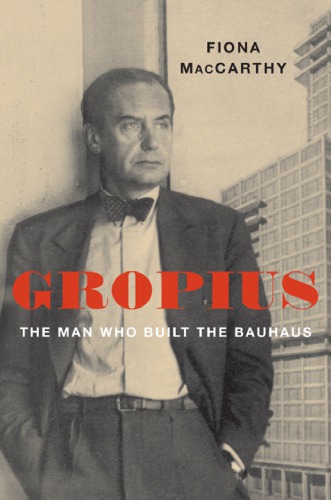

Most ebook files are in PDF format, so you can easily read them using various software such as Foxit Reader or directly on the Google Chrome browser.
Some ebook files are released by publishers in other formats such as .awz, .mobi, .epub, .fb2, etc. You may need to install specific software to read these formats on mobile/PC, such as Calibre.
Please read the tutorial at this link. https://ebooknice.com/page/post?id=faq
We offer FREE conversion to the popular formats you request; however, this may take some time. Therefore, right after payment, please email us, and we will try to provide the service as quickly as possible.
For some exceptional file formats or broken links (if any), please refrain from opening any disputes. Instead, email us first, and we will try to assist within a maximum of 6 hours.
EbookNice Team

Status:
Available4.6
14 reviewsThe impact of Walter Gropius can be measured in his buildings--Fagus Factory, Bauhaus Dessau, Pan Am--but no less in his students. I. M. Pei, Paul Rudolph, Anni Albers, Philip Johnson, Fumihiko Maki: countless masters were once disciples at the Bauhaus in Berlin and at Harvard. Between 1910 and 1930, Gropius was at the center of European modernism and avant-garde society glamor, only to be exiled to the antimodernist United Kingdom during the Nazi years. Later, under the democratizing influence of American universities, Gropius became an advocate of public art and cemented a starring role in twentieth-century architecture and design.
Fiona MacCarthy challenges the image of Gropius as a doctrinaire architectural rationalist, bringing out the visionary philosophy and courage that carried him through a politically hostile age. Pilloried by Tom Wolfe as inventor of the monolithic high-rise, Gropius is better remembered as inventor of a form of art education that influenced schools worldwide. He viewed argument as intrinsic to creativity. Unusually for one in his position, Gropius encouraged women's artistic endeavors and sought equal romantic partners. Though a traveler in elite circles, he objected to the cloistering of beauty as "a special privilege for the aesthetically initiated."
Gropiusoffers a poignant and personal story--and a fascinating reexamination of the urges that drove European and American modernism.
Fiona MacCarthy was the author ofWilliam Morris: A Life for Our Time, winner of the Wolfson History Prize and the Writers' Guild Nonfiction Award, and the well-receivedByron: Life and Legend. A former design correspondent forThe Guardianand architecture critic forThe Observer, she curated exhibits at the Victoria & Albert Museum and the National Portrait Gallery in London. MacCarthy was a Fellow of the Royal Society of Literature and a Senior Fellow at the Royal College of Art.